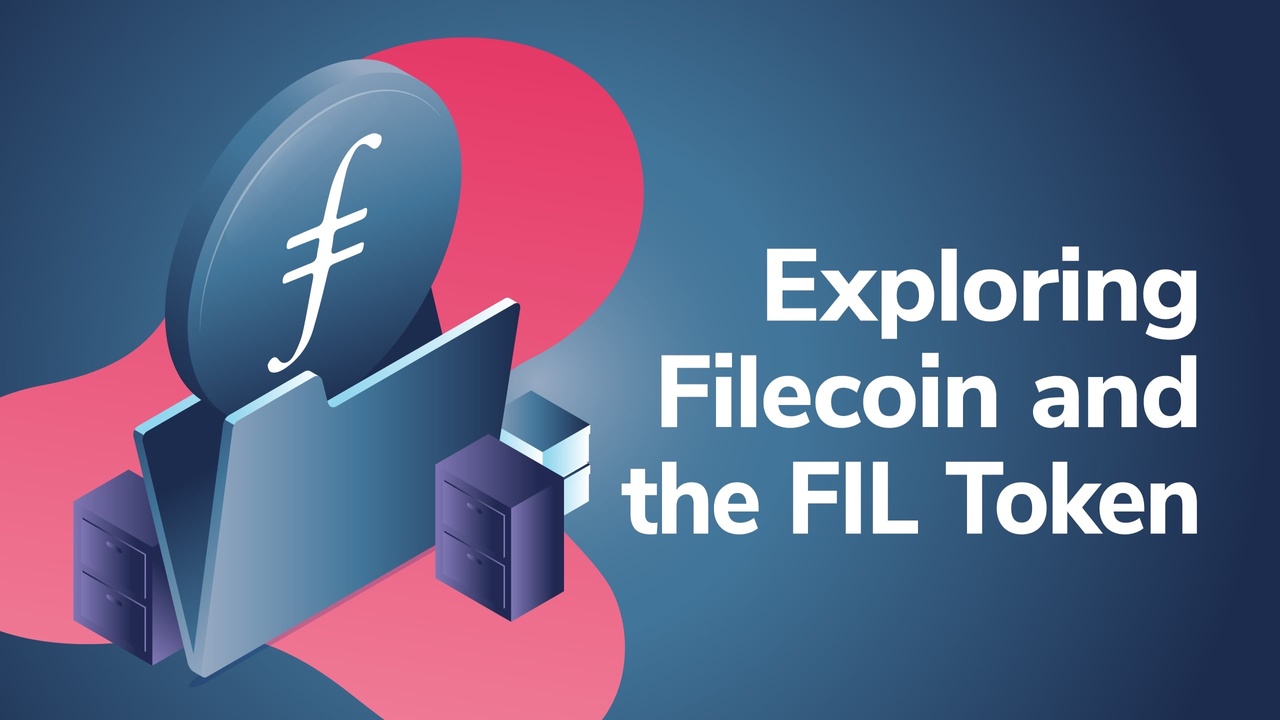
Filecoin is a blockchain-based, decentralized storage network, powered by the Filecoin token (FIL). Following a successful initial coin offering (ICO) fundraising round in 2017, the mainnet was launched in late 2020. Since then, Filecoin has seen immense success and media attention in the crypto community. So, what is Filecoin doing to become so popular? Perhaps it’s because Filecoin allows users to monetize spare storage on their hard drive, and earn a passive income with crypto. Or, maybe it’s because Filecoin has designed protocols with a lot of potential for the future. Let's find out!
In this article, we’ll dive deep into Filecoin’s protocols to discover how the platform operates. Also, we’ll take a look at ways in which you can use Filecoin to earn a passive income with cryptocurrency. Finally, we’ll explore the Filecoin token and the reasons why Filecoin has become so popular during the 2021 Bitcoin bull market.
If you’ve yet to invest in any cryptocurrencies, make sure to see the Crypto Basics course at Ivan on Tech Academy. This course offers video-guided tutorials, showing you how to create an exchange account, plus how to buy, trade, and store your crypto investments securely. Following this, you can learn how to purchase cryptocurrencies using a web3 wallet such as MetaMask, through our DeFi 101 course. Ivan on Tech Academy provides all the educational material you need to start safely investing in crypto, protect your wealth, and tips to avoid scams in the industry. What are you waiting for? Enroll today in one of the most appreciated cryptocurrency education platforms anywhere!
Filecoin Background
Let’s start at the beginning, with Filecoin’s background and how the project came to be. Filecoin originally raised an impressive $200 million in less than an hour during their initial coin offering (ICO) in 2017. At this stage, Filecoin was merely a concept and a promise to design and deploy a novel storage protocol. The project received support from Web3 Foundation, a research and development community building towards a decentralized web. Additionally, Filecoin received support from Protocol Labs, an “open-source research, development, and deployment laboratory”.
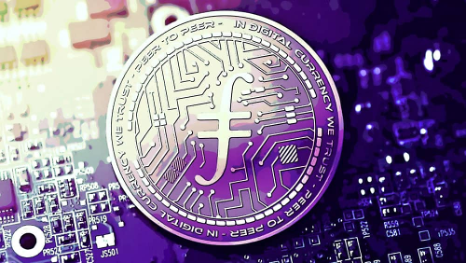
Filecoin’s original plan was to launch its mainnet in 2019, however, this was pushed back to October 2020. During this period, ConsenSys collaborated with Protocol Labs to enable interoperability for developers of Filecoin and Ethereum. Since the mainnet launch, Filecoin has gone from strength to strength in terms of both user adoption and market cap ranking.
Interplanetary File System (IPFS)
Filecoin was created by Juan Benet, an esteemed American computer scientist. Benet is also responsible for other global start-ups and innovative protocols including Protocol Labs and the Interplanetary File System, or IPFS.
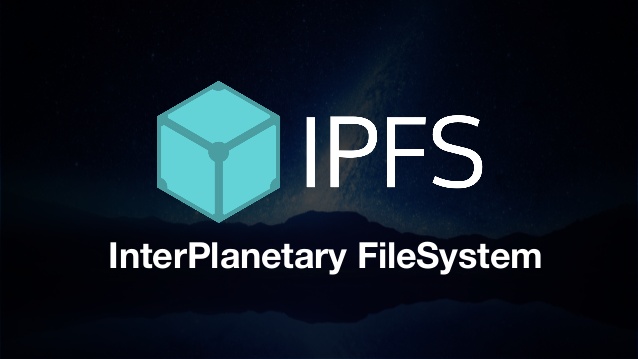
The Interplanetary File System (IPFS) offers a distributed network for users to both host and receive content. IPFS identifies unique data by using content addresses, stored on the network's nodes. Users can access content by requesting it through IPFS nodes using a distributed hash table (DHT).
Filecoin can be referred to as the “cooperative storage cloud” of IPFS and was first described as “an incentive layer” for the peer-to-peer storage network.
What is Filecoin?
Filecoin is an open-source protocol facilitating secure data storage and retrieval, through a decentralized blockchain-based network. The platform was introduced to benefit users who wish to store data online, and users who wish to provide online storage capacity, being rewarded for doing so.
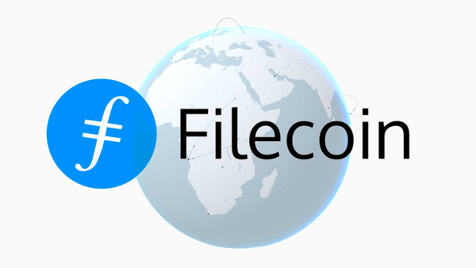
Rewards are distributed in the native Filecoin token (FIL). Moreover, Filecoin uses various economic incentives for users, nodes, and miners on the network, to maintain transparency, privacy, and efficiency.
Filecoin for Users
From a user’s perspective, Filecoin offers some of the most competitive prices for network storage facilities. Pricing for storage is not fixed, as users can choose a particular node in the network that offers storage best suited to their needs. Users can choose nodes based on their priorities of cost, speed, and redundancy.
Also, Filecoin facilitates the ability for users to verify that their data is being stored securely and sufficiently at any time, by checking “proofs” on the Filecoin blockchain. Users can choose one or multiple nodes in the Filecoin network to store their files. This is achieved through a simple all-in-one platform, unlike most centralized storage infrastructures that require a different API (application programming interface) for each provider.
Filecoin for Storage Providers
Filecoin has abdicated most barriers to becoming an independent storage provider. Storage providers can be individuals or organizations with spare storage/disk space on any computer connected to the internet. Moreover, this means that storage providers could also have Filecoin-dedicated hardware with lots of storage space, and be rewarded for doing so.

Storage providers run miners known as ‘storage miners’ on the Filecoin blockchain and in turn are rewarded with Filecoin FIL tokens. Once a user has downloaded the Filecoin protocol, they instantly get exposure to all Filecoin users. Filecoin takes care of promoting storage facilities, removing the worry of designing a storage API (application programming interface) and advertising space. The Filecoin protocol is making it possible for anyone to sell their computational storage on an open market.
Filecoin (FIL) Token
The native Filecoin Token (FIL) is a utility token used across the Filecoin network. Tokens are used as rewards for active participants in the network. Additionally, holding the Filecoin token gives users rights to access the network.

The maximum supply of FIL tokens is around 2 billion (1.98 billion according to CoinGecko) with a current circulating supply of 59.7 million. New Filecoin tokens (FIL) will be introduced through a novel block reward protocol, stretching out over 16 years. This is due to the dual-minting model for the production of Filecoin tokens; Baseline Minting and Simple Minting.
In short, Baseline Minting produces FIL tokens depending upon the performance of the network. Simple Minting is a set amount of tokens to be minted “on a six-year half-life based on time”. This small allocation of tokens has been set to be introduced into circulation regardless of agent actions, providing counter pressure to a sudden or drastic reduction in network usage.
Additionally, there are 300 million FIL tokens held back as a reserve and incentive for future minting incentives. This is another way in which Filecoin has designed a protocol that will last into the future.
How Does Filecoin Work?
What is Filecoin doing to create such a mutually-profitable decentralized storage network? There are various aspects to the Filecoin ecosystem, including different types of networks, nodes, and miners. As an overview, Filecoin users pay storage miners on the Filecoin network to store their files securely, with the ability to confirm privacy status and retrieve the data when needed.

This being said, Filecoin is intricately programmed to ensure sustainable decentralization, coinciding with continuous incentivization for all participants on the network. Below we’ve explained a brief overview of the technicals under the hood of Filecoin.
Networks
There are different networks available for developers to build, test, and evaluate decentralized applications (dApps) on the Filecoin blockchain. These are in place for developers to create the best dApps possible before launching on the mainnet.
For developers looking to do small-scale testing, Filecoin offers Nerpa. Nerpa has “small sector sizes and reduced proof parameters, so sealing takes under 25 minutes”. An alternative network is the Calibration testing network, recommended for app developers and the majority of prospective miners. Calibration helps to evaluate testing on a larger scale alongside optimization of dApps before being deployed on the primary Filecoin mainnet.
The Filecoin mainnet was launched on block 148,888, on October 15th, 2020. The mainnet incorporates nodes and miners as ‘peers’ in the network. Peers communicate information across the network and verify other peers, through a process called ‘gossiping’, ensuring files are stored correctly.
Filecoin Nodes
For the Filecoin blockchain to achieve a global state on messages and transactions, Filecoin Nodes or ‘Filecoin clients’ are responsible for validating messages. Filecoin Nodes have the ability to broadcast different types of messages across the network.
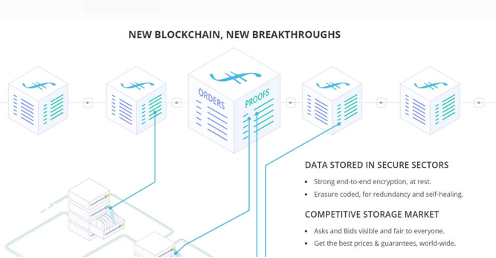
For example, Filecoin Nodes can manage Filecoin wallets, and broadcast messages to send FIL tokens from one wallet to another. Also, Filecoin Nodes can broadcast messages to Filecoin miners requesting storage and retrieval deals (explained further on). Furthermore, Filecoin Nodes are rewarded in FIL tokens for their contributions to the network.
Filecoin Mining
Cryptocurrency mining is often associated with Proof-of-Work mining, which requires large amounts of computational power. Filecoin mining works slightly differently, instead, providing storage capacity and making deals with users looking for storage. Miners are responsible for appending blocks to the Filecoin blockchain through executing the different messages broadcast by Filecoin Nodes. There are three different types of Filecoin miners: storage miners, retrieval miners, and repair miners.
Storage miners, as previously mentioned, are responsible for storing data, and providing continuous cryptographic proof that the data is correctly stored and secure. Failing to do so will result in penalties. The more storage capacity a storage miner provides, the higher the chance of earning rewards. This is as opposed to hashing power being proportional to the probability of receiving block rewards.
Retrieval miners earn FIL token rewards through mining fees and winning bids for retrieving a particular file. The bid, suggesting bandwidth response time, will determine the Retrieval miner’s ability to close deals on the network. This gives users options around proximity and latency with data transactions. Repair miners have yet to be implemented, with little information published suggesting the time of launch.
To learn more about cryptocurrency mining, be sure to check out the Blockchain & Bitcoin 101 course at Ivan on Tech Academy. Here you’ll learn the fundamental basics of how blockchain technology operates. Also, Bitcoin mining is covered in our Bitcoin Money Revolution course, which teaches students about the history of money and how Bitcoin has changed the financial industry forever. Check out the many courses available at Ivan on Tech Academy, the number one blockchain education suite.
Storage and Retrieval Deals
There are two main types of ‘deals’ available with Filecoin:

- Storage deals: These deals are agreements between users and storage miners for storing files or other data on the network. Miners will provide proof they have received and stored the data, in addition to continuous proofs whilst the deal is active.
- Retrieval deals: Logically, retrieval deals are the opposite of storage deals, with an agreement between users and retrieval miners to extract requested data stored in the network. However, retrieval deals are fulfilled off-chain using payment gateways paying for the data as and when received.
Proofs and Consensus Mechanisms
Filecoin uses two different consensus protocols in conjunction to provide “self-healing” features, creating a self-sustainable decentralized ecosystem for the future. Using Proof Of Replication (PoRep) and Proof of Spacetime (PoSt), Filecoin can ensure the network remains valid at all times.
Proof-of-Replication
Once a storage deal has been created, the first proof provided is verified through the Proof-of-Replication mechanism (PoRep). Miners prove that data has been received and encoded in a way that is unique to a specific miner. As soon as a deal commences, the cryptographic proof is provided.
Proof-of-Spacetime
When a storage deal is active, miners use Proof of Spacetime (PoSt) to verify that their files are stored and consistently valid. This continues during the duration of the deal, with miners earning FIL token rewards with each proof. PoSt involves random miners being selected to verify random parts of their stored data.
Combining these two mechanisms allows Filecoin to transparently see the reputations of miners and autonomously spot bad actors in the network. This adds the reliability, decentralization, and trustlessness that Filecoin is designed for.
Why Use Filecoin?
Filecoin boasts decentralized advantages over competing centralized cloud storage facilities such as Cloudflare or Amazon Web Services. By implementing blockchain technology, Filecoin can transparently protect the integrity, location, and privacy of data. Also, Filecoin makes it super easy to retrieve data, with ‘hypercompetitive’ pricing.

Filecoin uses a model that economically incentivizes users and participants to act honestly. Peers are rewarded for adhering to the protocol and penalized for not honoring their deals. Moreover, Filecoin makes it incredibly easy for anyone with spare disk or storage space to share it with other users and be rewarded for doing so. This could potentially be a way to earn a passive income with crypto.
Filecoin & Filecoin Token (FIL) Summary
Filecoin is one of the first decentralized data storage infrastructures in existence. Moreover, the protocol is designed to economically incentivize all participants, and offer competitive prices for decentralized data storage space.

Filecoin has shown continuous strength, completing and releasing the mainnet three years following the project's initial coin offering (ICO). This bodes well for the future of Filecoin and the Filecoin token as popularity continues, with both consensus mechanisms and tokenomic structures allowing for substantial future growth. Moreover, Filecoin removes barriers for entry of participation in creating a decentralized shared network of storage facilities and capacities.
Blockchain technology can be incorporated into most current business IT infrastructures, improving the efficiency of data and financial transactions. If you’re interested in learning more about the revolution of finance and technology, be sure to see the FinTech 101 course at Ivan on Tech Academy. This course explains basic concepts, popular integrations, plus regulations and formalities surrendering FinTech. Also, the Blockchain Business Masterclass course provides a great insight into how to incorporate blockchain technology into several business models. Plus, completion of the courses can equip you with sufficient knowledge to find your perfect career in blockchain!
